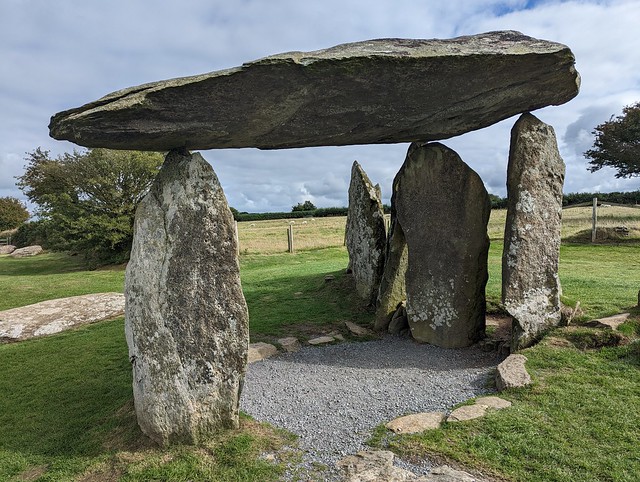I spent the week in Pembrokeshire, exploring the coast and visiting various old and ancient places of interest. There was a bishop's palace (around 200 years old), a reconstructed Iron Age village built on the site of the original settlement (2500 years old) and a Stone Age floating stone dolmen (5000 years old). These are all astonishing examples of technology from the past. Did you know there is no smoke hole in an Iron Age roundhouse because it created a smoke ceiling that was useful for smoking meats and then the tar deposited as the smoke worked through the thatch helped insulate and keep insects from nesting in the roof? The design of the house was such that with a correctly sized fire, the smoke ceiling stayed well out of the way of the inhabitants. This created a beautiful ecosystem using all parts of the fire and this was 2500 years ago.
On the other hand, we can't build an HR system that works properly.
One way I like to expand my thinking about the tech industry is by learning from other walks of life. Tech is a very young industry and while some of our challenges are unique, many have come up time and again and we really should learn from others before attempting to reinvent the wheel. Usually I look at modern industry like manufacturing, supply chain logistics, beer brewing, food packaging, game development, forging and so on but sometimes we can gain inspiration (or at least be humbled) by looking much further back.
So let's look at Pentre Ifan, the neolithic dolmen.

The top stone was originally a larger rock which was split by craftsmen and now weighs around 16 tonnes. It is balanced on the tips of three other stones, high enough for a fairly tall person to walk under without stooping. In person, the effect is actually quite eerie - it looks like a strong wind will knock it over. What we see here is very simple, yet elegant design and a very high commitment to engineering excellence in order to execute it properly. It was believed to have been winched up a little at a time using ropes and pulleys, with supporting boulders put in place each step. So iterative construction with solid testing at each stage (with failed tests resulting in a 16 tonne boulder falling on the workforce...). They had to create supporting structures (the smaller boulders), which were later discarded when no longer required.
They put in the work to make this last (last 5000 years, as it happens). It even has a small environmental footprint since the materials are locally sourced. So is this pinnacle of sustainable development?
Well, not exactly. That means building for the future - creating something simple and well documented so we can maintain and make use of it going forward.
Thing is, we can't maintain or extend this dolmen (ignoring the protected status for a moment, and the sheer horror of using a 5000 year old monument to build "something else"). For this to be useful, we need to know what it is for. Is it a doorway to a tomb? Some kind of temple or altar? The real problem is around knowledge transfer. Where is the original documentation telling us the core purpose with notes about how it was built? The fact it predates writing in Britain by around 3000 years is no excuse!
Plus, while the design is elegant it is not intuitive. If it were, we'd be able to work out what it does and how to use it. More UX work required here, I feel. Whatever it was, it has outlived it's original purpose and has clearly missed its (admittedly impressive) maintenance cycle, which would have had it replaced by a modern equivalent a few thousand years ago.
This post needs to end. Somewhere in all the above silliness are some solid points, honest.
Pentre Ifan itself is incredible.
No comments:
Post a Comment